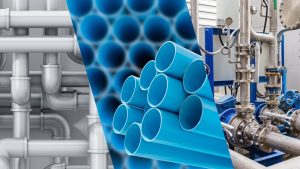According to Frontiers, a scientific research publishing company, Agriculture accounts for one-third of global land use and promotes 15 per cent of global green gas emissions. In looking at sustainable forms of producing goods, regenerative agriculture has been booming in the agricultural sector. It refers to the return to traditional farming, adopted by indigenous farmers, that focused on nourishing practices. It is popularly known by the term ‘regen ag’ and includes practices related to low-tillage, adding compost as fertiliser, extending crop rotations, grazing animals and more. Simply put, regenerative agriculture helps restore soil and creates a healthy ecosystem where the environment is sustainable, and inequity can be addressed. As climate change and other concerns have come to the forefront with the increasing demand to feed the growing populations, communities are beginning to realise how regenerative agriculture can help restore ecologies and contribute towards economic development. When water asset managers, however, are considering the readoption of regenerative agriculture, they are not simply requesting farmers to scale backwards. Instead, with the development of technology today, asset managers have been looking at how this process can be achieved faster. This article will explain the modern technologies helping farmers adopt regenerative agriculture.
Why Regenerative Agriculture?
Currently, the ‘industrial’ agricultural system follows practices that drastically affect the public’s safety and the environment. For instance, it promotes soil erosion at a rate of 10 to 100 times higher than soil formation. It also leads to the reduction of nutrients and influences poisonous algae blooms in freshwaters. Harmful practices such as monocropping have significantly affected biodiversities in agriculture. The modern practice of taking animals away from the cropping system and separating them into confined facilities has led farmers to have a low turn-out in nutrients, reducing their overall water retention. The modern system that replaced regenerative agriculture introduced many problems, such as weeding and pest problems with chemicals.
Moreover, according to Regenerative International, soil scientists estimate that within 50 years, we will not have arable topsoil to cultivate food and will seriously suffer from qualitatively degraded food supplies, diminished nutrients and loose essential trace minerals. Due to these concerns, there has been an increased need to change farming practices that respect nature. This is why regenerative agriculture is not simply regarded as a form of farming but a philosophy. Various scientific communities have listed the advantages of regenerative agriculture, with the Intergovernmental Panel on Climate Change listing it as an essential factor for sustainable land management. This includes Australia, where organisations such as Regenerative Australian Farmers and government agencies such as the Department of Primary Industries and Regional Development have actively worked towards implementing this form of agriculture.
Technologies to Help in the Adoption of Regenerative Agriculture?
Regenerative agriculture looks at nature’s core requirements to effectively provide ample natural resources. Its primary focus is prioritising soil health. Soil plays a crucial role in the crop formation. Plants depend on it to create healthy nutrients, and biological structures such as healthy microbes like bacteria and fungi build underground. Here are technologies adopted to help adopt regenerative agriculture.
IoT Sensors and Drones for Remote Monitoring
IoT and drones play a vital role in terms of monitoring soil health. Instead of dealing with crops that could carry harmful substances, monitoring helps ensure that plants meet the highest health standards. By incorporating drones and IoT sensors, this process can be automated. Drones, also known as unmanned aerial vehicles (UAVs), scan the premises and find the best seeding prescriptions. They are also used to prune and thin crops, improve crop models, comprehensively understand plant populations and decide when and how plants should be replanted. Different types of sensors can be used for this purpose. Rotary and fixed-wing drones are the two main kinds used in this regard. A fixed-wing is generally regarded as the most appropriate in agriculture. An essential aspect of infusing IoT sensors is that farmers can receive real-time data on their crop health. Hence, the accumulated data can help farmers understand why an infection or anything else occurs, providing time to take measures before it is too late.
AI and Predictive Analytics to Mitigate Risk
While sensors and drones are predominantly used to accumulate data into one central system, it is via AI and predictive analytics that the system can conclude whether there is a risk. Thus, a farmer is not expected to look through the real-time data on the computer and decide whether the crop is in danger. Instead, AI will use machine learning capabilities to understand the root cause and send an automated notification to the farmer, notifying them of any changes. By having access to historical and current data, the technology can pinpoint whether the cause of the failure is a bacterial infection due to a decrease in soil quality. Moreover, such technologies can monitor the health conditions of the assets used in farming. From predicting the right time period for routine maintenance, these technologies help farmers to increase asset lifecycles.
GIS to Cover Larger Land Mass That Detects Soil Health
Geographic Information Systems (GIS) offer significant benefits in regenerative agriculture. For one thing, instead of adopting multiple sensors or drones throughout cultivation, a GIS solution gives you the big picture in one go. It can cover larger areas that can capture the entire farm or even multiple farms across different locations. It captures high-resolution images which demonstrate intricate factors in the soil. The pictures allow farmers to detect danger through the different levels of colours, which state how much energy is reflected. It will enable farmers to assess the plant’s spectral features, which play a key role in determining whether the plant is good. Information on soil fertility and soil nutrition, monitoring water deficiency and a range of pivotal information can also be concluded. It allows you to predict natural disasters and consider how they could affect each crop. Based on such information, advanced steps can be taken to curtail or salvage the existing crops from being destroyed.
Truly Connect with Nature with Regenerative Agriculture
To ensure safe practices are implemented in agriculture, you need to understand nature. This includes taking the necessary steps to monitor and assess soil health, ensure enough water is provided and detect whether nutrients are appropriately formed every season. Implementing practices that put the environment at risk contradicts the core concept of agriculture. This is why regenerative agriculture is the right agricultural method. To make this process easy, farmers should consider adopting modern technologies with increasing demand worldwide, with a proven track record of excellence. Become a farmer that enjoys the benefits of your labour whilst being the saviour of the environment and human population.







